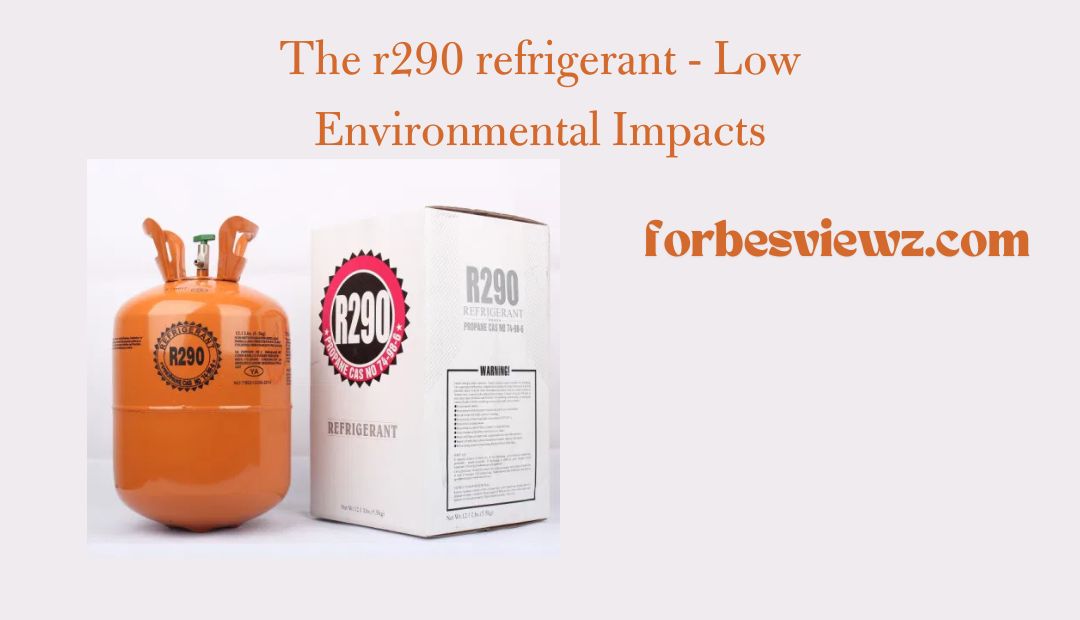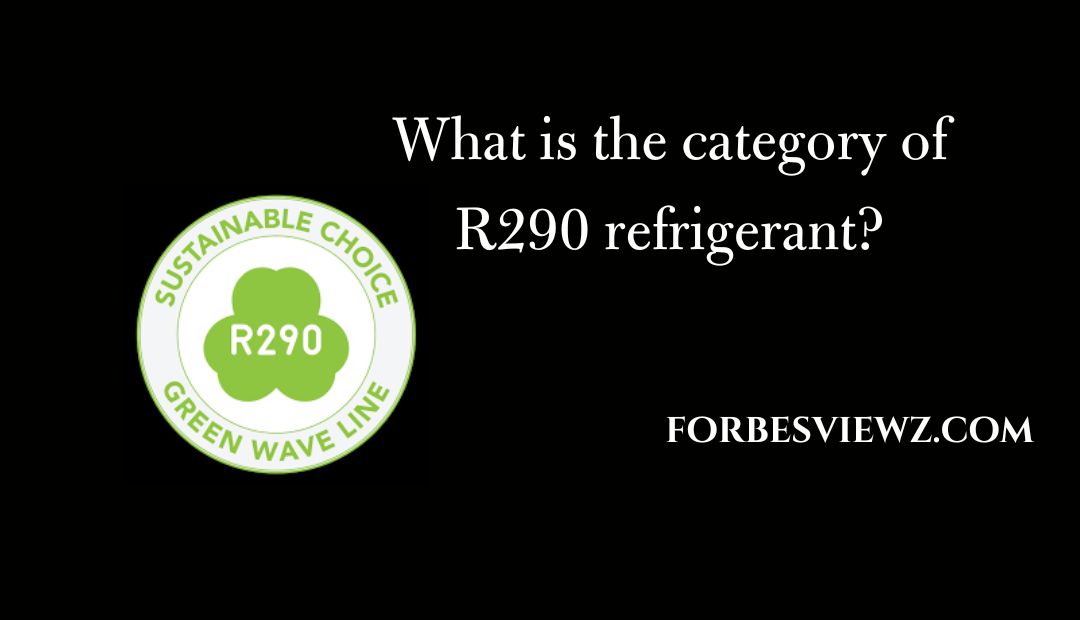The r290 refrigerant – Low Environmental Impacts

The r290 refrigerant is a natural refrigerant with low environmental impacts. Which is ideal for small-charge refrigeration systems and air conditioning units with zero ozone depletion potential and the lowest Global Warming Potential rating possible.
However, its flammability has raised safety concerns; however, strict safety standards can help mitigate them through proper handling, storage and leak detection systems.
What is r290 refrigerant used for?
R290 is an eco-friendly refrigerant that’s becoming increasingly popular among self-contained refrigeration systems. It has minimal environmental impact while being highly energy-efficient. Perfect for customers wanting to meet sustainability goals or comply with increasingly stringent refrigerant regulations.
Atmospheric refrigerant R-1234yf is non-toxic and odorless, making it safer than many alternative refrigerants. Furthermore, its low global warming potential and no ozone depletion potential. Make it suitable for manufacturers looking to lower their environmental impact.
R290 is easily available, making it simpler to source and use in refrigeration systems. Furthermore, its recharge requires less mass flow compared to similar refrigerants – potentially saving on costs of refilling your cylinders.
However, R290 handled and stored appropriately to avoid leaks and fires. Furthermore, it is understandable that R290 cannot simply replace HFCs as it must also comply with all environmental regulations; contact your local refrigeration expert for guidance in updating your equipment accordingly.
What is the spec of r290 refrigerant?
R290 is an eco-friendly refrigerant that is revolutionizing the refrigeration landscape. A natural hydrocarbon, R290 leaves minimal environmental impacts compare to traditional HFC refrigerants while it is completely devoid of ozone depletion potential – making it the ideal solution for businesses dedicate to sustainability.
R-290 is use in heat pump refrigeration systems. It works by shifting from liquid to gas and back in an evaporator, absorbing latent heat energy from air. Its structure while operating at lower temperatures.
As R290 is a flammable refrigerant, it must be handle and store carefully to avoid fire hazards and leakage issues. Miracle HVAC offers braze-free press fittings that are ideal for use with this refrigerant. We look forward to assisting you!
What is the category of r290 refrigerant?
R290 refrigerant gas, commonly referred to as propane, offers an eco-friendly alternative to current hydrofluorocarbon (HFC) refrigerants. With low GWP values and zero ODP potential values, R290 refrigerant can offer safer and more sustainable refrigeration needs than HFC alternatives. Cylinders of different sizes are available so as to meet all refrigeration requirements.
HFCs used in today’s refrigerators and freezers have an extremely high GWP value that’s harmful to the environment, depleting ozone levels and contributing to climate change. R290 on the other hand is an environmentally-friendly, natural, nontoxic refrigerant with a lower global warming potential (GWP) than HFCs.
R290 has been certified UL-Classified and meets AHRI Standard 700 for safety purposes. An important certification that ensures it has been rigorously test for specific properties. As per this certification, R290 should only be used in systems that have adequate ventilation and avoid flammable areas; additionally it has excellent thermodynamic properties which make it suitable for use in any refrigeration system; in certain applications R290 even outperforms phased-out HFC refrigerants like R22!
R290 refrigerant Replacement
R290 is an economical alternative to conventional refrigerants, featuring low global warming potential (GWP) and zero ozone depletion potential, making it suitable for use in refrigeration, heat pump, display case and air conditioning applications – in addition to being safe and environmentally-friendly replacement for R134A.
Hydrocarbon refrigerant is a naturally-occurring natural product and widely available, making it a sustainable choice for commercial refrigeration systems. Furthermore, its lower operating pressure means longer compressor lifespan and improved performance; however its flammable nature requires taking extra caution when installing or servicing equipment using this refrigerant.
Ambro Controls offers R290 disposable refrigerant kits in convenient and compact sizes for easy replacement needs when the time arises. Each of these reusable kits contains a professional charging hose with low pressure gauge and low pressure gauge as well as vent test thermometer and two service port caps, making this ideal for portable appliance recharging needs on-the-go – its lightweight design also making it convenient to transport.
R290 refrigerant problems
R290 has proven a good alternative to F-gases; however, some remain wary about its flammability and risks associated with using propane in heat pumps. Such concerns should not be misplace; provide proper safety procedures are followed when operating them (position heat pumps in clear, open areas with no obstructions to airflow and using methods such as pressure testing, commissioning/servicing quality checks/fit detection/ventilation to detect leaks), propane i an exceptionally safe choice.
R290 refrigerants differ significantly from HFO blends by not containing critical proportions, making them much safer to use while being much more eco-friendly than alternatives.
Tang et al [15] examined the concentration distribution of R290 following STHAC indoor leakage using series gas detectors, and discovered that fire risk only occurs during fast leaking periods and only covers a limited area underneath leakage point. They further concluded that factors like leaking rate, charge quantity, air flow rate and leakage hole diameter have profound influences on concentration distribution; consequently it is vital to install solenoid valves close to capillaries so as to minimize both their rate of leaking as well as risk.
The r290 chemical formula
R290 refrigerant is an environmentally-friendly hydrocarbon with low global warming potential (GWP) and ozone depletion potential (ODP), non-toxic properties and no odour; suitable for refrigeration equipment as well as air conditioning applications with conventional lubricants.
As the phaseout of HCFCs and CFCs progresses, alternative refrigerants such as R290 are becoming more widely used worldwide – hence its nickname as the “proven refrigerant”.
Low Global Warming Potential makes HCFC-22 an excellent replacement, complying with Kigali Amendment regulations while boasting good pressure levels and refrigeration capacity, making it an excellent option for small retail fridges and freezers.
Phosphorous acid comes packaged in steel cylinders or ISO-TANKs (tank cars) for storage purposes, and should be kept cool, dry and ventilated environments away from heat sources and direct sunlight. Due to its explosive and flammable properties, handling should always be performed with extreme care; never mix with other chemicals or store near combustibles.
What is the critical point of r290?
R290 (also known as propane) is a safe, eco-friendly replacement for F-gases. Due to its flammability, R290 should only be handle by trained professionals or used in systems retrofitted specifically to accept it. R290 boasts many advantages over its predecessors such as higher coefficient of performance (COP) and lower discharge temperatures as well as having lower liquid density which means smaller refrigerant perfusion rates and reduced system pressure.
R290 shares many similar properties to R-22; however, its critical point differs in that it has higher volatility and vapor pressure levels than R-22, necessitating its use at lower pressure to prevent leaks. To protect against further risks associated with high temperatures or potential heat sources it should also use a system equip with adequate ventilation and keep it away from direct heat sources.
A refrigerant’s critical point determine by AHRI standard 700 and by studying its thermophysical properties. Furthermore, always choose high purity level refrigerants , since contaminants can have a serious detrimental impact on system performance.
R290 refrigerant dangerous for health
R290 refrigerant is an environmentally friendly alternative to legacy hydrofluorocarbon (HFC) products is phasing out due to their high global warming potential and ozone depletion potential (ODP). Due to its lower GWP/ODP ratings, R290 makes an excellent choice for commercial refrigeration; however, as it is hazardous if handle improperly due to highly flammable.
R290 is a class A3 flammable gas that can quickly ignite when exposed to an ignition source such as open flame or spark, raising safety concerns; however, these risks can be decreased by adhering to design standards and handling procedures as well as installing leak detection systems and conducting regular inspections to ensure employee wellbeing while working with this refrigerant.
R290 (or propane) refrigerants can be used in numerous refrigeration applications. Not all R290 refrigerants are created equal, and some contain contaminants which could compromise system performance and cause issues with system efficiency. To avoid such issues, ensure you purchase high-purity R290 that ensures you get maximum value from your equipment while meeting upcoming sustainability regulations.
Frequently Asked Questions
What is the practical limit of R290?
R290 refrigerant, also known as propane, is flammable and has practical limits for safe use. Typically, its charge limit in refrigeration systems is around 150 grams to minimize risks while maintaining efficiency and performance.
What are the precautions when using R290 refrigerant?
When using R290 refrigerant, ensure proper ventilation. Employ leak detection systems and avoid ignition sources nearby. Use protective gear to reduce exposure risk, and only trained professionals should handle the installation or servicing of R290 systems.
What is the information about R290?
R290 refrigerant, also known as propane, is a natural hydrocarbon. It’s eco-friendly with low global warming potential. Widely used in commercial refrigeration, it offers efficient cooling while being non-toxic and flammable, requiring careful handling.
What are the rules for R290 refrigerant?
When working with R290 refrigerant, adhering to specific regulations is crucial. Local and international guidelines dictate its safe use due to flammability concerns. Only certified technicians should handle this substance.
Proper labeling and storage are important to prevent accidents. Equipment must meet safety standards designed for hydrocarbons like R290. Always ensure adequate ventilation in workspaces.
Regular training on handling procedures helps maintain a safe environment. Compliance with these rules protects both people and property while maximizing efficiency in systems using R290 refrigerant.





